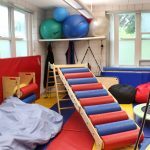The Pallotta School serves students between the ages of 3 and 15 requiring an out-of-district day placement or a 45-day assessment. The goal of the Pallotta School is to best support our students in strengthening their emotional and behavioral regulation skills so that they can successfully access the least restrictive learning environment based on their individual needs. Pallotta School students include (but are not limited to) students with diagnoses of Autism, ADHD, Anxiety, Bipolar Disorder, Post-Traumatic Stress Disorder, other Emotional Disabilities, Developmental Delays, and/or Specific Learning Disabilities. Pallotta School students may have experienced traumatic events in their past, and/or may have struggled with internalized or externalized behaviors in their school settings. In addition to challenges with emotion and behavior regulation, Pallotta School students may experience challenges with focus and attention, social skills, self-advocacy skills, self-confidence, and academic skills.
At the Pallotta School, students benefit from a highly structured and predictable learning environment, a high staff-to-student ratio, a highly supervised educational environment, individualized educational and clinical support, individualized and school-wide positive behavior management plans, social skill development opportunities, trauma-informed care and opportunities for family collaboration and teamwork.

Academics
All students at the Pallotta School are provided with a wide range of curriculum materials that address specific emotional and learning needs based on the goals and objectives in their Individual Educational Plan.

Clinical Services
The Pallotta School provides a therapeutic environment to help support each student's individual emotional, behavioral and social goals. Consistency of treatment is maintained through a team approach.

Continuum of Care
The continuum of programs at the Italian Home provide children with the opportunity to enter for one service and possibly be referred to and benefit from many of the other programs offered. This continuity of care is very beneficial to the overall improvement and health of the individual child.

